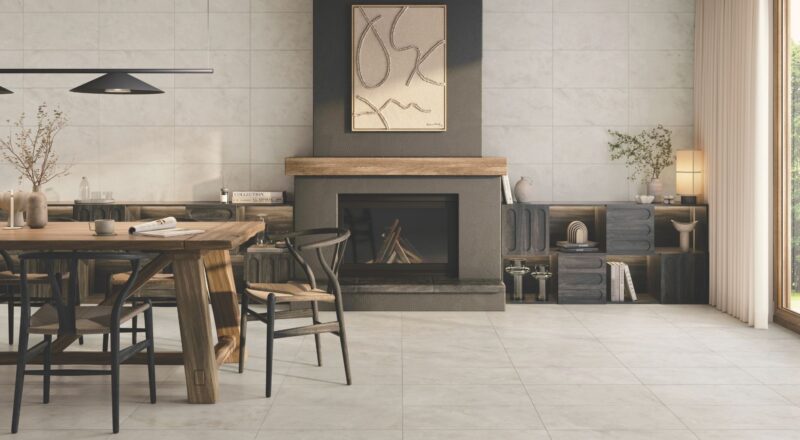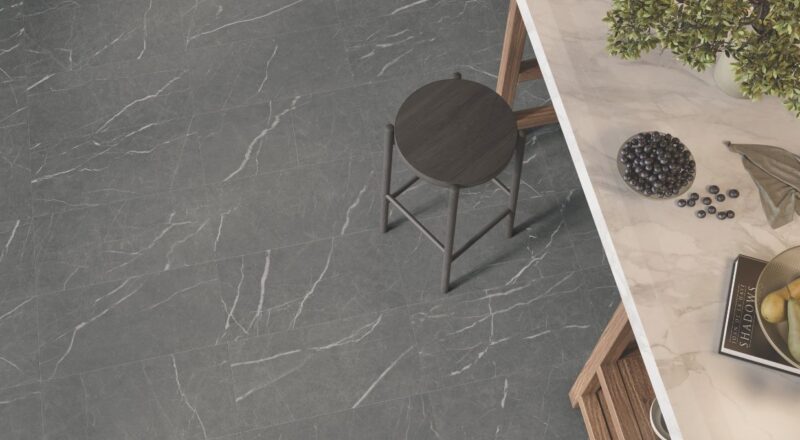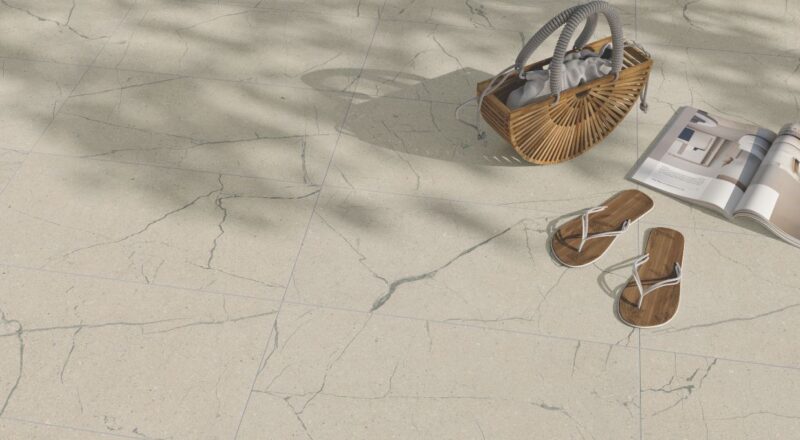Hotels, from large chains to boutiques, now compete against modern lodging alternatives. Most famously, the Airbnb model of short term, residential rentals has taken hold, and travelers have flocked to the versatility, affordability, and local amenities these home sharing services often provide. The numbers indicate that this hospitality trend is on the grow. Airbnb isn’t the only player in the home share game, but it’s certainly the largest, reporting 80 million guests arrived at their listings in 2016 alone. This chart at right shows that Airbnb’s website traffic now exceeds that of long-established brands, indicating just how strongly this tide has shifted.

Perhaps in direct relation to the home-sharing phenomenon, traditional lodging companies are recognizing that travelers are yearning for a more genuine experience reflective of local culture, with homier settings and less uniformity. Crossville is taking note of and answering this trend.
We’ve observed several interior designers who traditionally work in the residential market take on hospitality design projects because they’re able to incorporate the elements of home that today’s travelers may be looking for. We’re tracking the kinds of materials being specified for hospitality projects–solutions that meet commercial performance requirements and offer the design appeal some might see as more residential in style. We’ve supplied our creative tile solutions for many hospitality projects that are being designed for this new era.
Here’s a look at tile’s role in hospitality projects influenced by residential design.
Lobbies
The current trend for more communal space in homes has extended to the hotel lobby; and it’s important for newly designed and renovated hotel lobbies to include a range of spaces (both intimate and social zones) that can support a variety of activities. The lobby is no longer just a place for waiting; it’s a living room, a gathering space, and a place for eating and drinking. The feel of the lobby as living room is less formal and more intimate, with residential-inspired seating areas that invite conversation while delivering functionality and comfort. The lobby is frequently extended outdoors with large comfortable seating, fire pits, and patio-style service bars offering food and drink.
Tile is an excellent choice for common areas in hotels. Its durability and longevity are essential for demanding, high traffic areas, while its aesthetics can answer nearly any design style imaginable. Hotel guests are clamoring for uniquely installed patterns, decorative elements, and color. Perhaps influenced by the global imagery accessible through social media, patrons are quick to snap and share when they see design elements worthy of posting, and they’ll often feature tile that stands out.
Guest Rooms
Whether boutique or chain, uniformity in hotel guest room design is not considered a selling point. Diversity in design over the familiarity of a brand statement can be an effective approach for creating a more home-like atmosphere. Using local art in guest rooms offers a residential touch that reflects local culture, and high quality fabrics, linens and surfaces are more important than the size of the room. Guests often work in their guest room, and just like at home, they prefer to use their laptop or mobile devices in bed or while relaxing in a cushy upholstered armchair. Fixed workspaces in guest rooms are making way for comfortable residential style seating areas or mobile work stations, with ample and convenient outlets a must.
For the design of the upscale Archer Hotel, Austin, the design team from LK Architecture, led by Linda Ehlen, chose Crossville’s SpeakEasy as a durable wood-look alternative to carpet for the guest room flooring, but opted for carpet installed directly under and extending about 12” around the beds for homestyle comfort and quiet underfoot.


Bathrooms
More than a place to freshen up, the hotel bathroom is deemed an indicator of how upscale or current the place is, and expectations are high these days. Travelers have greater expectations from hotel bathrooms than what they have from the bathrooms in their homes, but that doesn’t mean elements from residential bathrooms aren’t welcome. Ample lighting is a must, and that means good lighting (like you would have at home), as well. Many hotels are switching from compact fluorescents to LEDs which are warmer and more flattering. As with residential bathrooms, the tub is on the way out, making way for spacious, comfortably sized showers. Borrowed from residential design, barn doors and sliding doors are now replacing swinging doors to the bathroom, especially in areas with space constraints. High-end plumbing fixtures, quality surfacing materials for floors and walls, and homey decorative elements round out the “home away from home” atmosphere.
This “Carriage House” cottage, part of the Inn on Randolph in Napa Valley, perfectly personifies the “home away from home” vibe with on-trend barn doors and homey decorative elements. Chicago and Arizona-based interior designer Kim Scodro of Kim Scodro Interiors selected Crossville’s marble-like Virtue porcelain tile for the bathroom floors and countertops and Color by Numbers in 1812 Overture for the walls.



Crossville’s Approach to Trend Tracking
As we look at the evolution of hotel design and hospitality trends, we focus on far more than material specification, colors, and overall aesthetics. We seek to understand the mindset of travelers, the priorities of proprietors, and what factors are influencing the business as a whole. In our deep understanding from a business perspective, we’re in a unique position to anticipate the needs of the hospitality segment in terms of technical performance requirements, style and design, as well as for issues beyond the tile products themselves such as sample ordering, delivery, and fulfillment.





